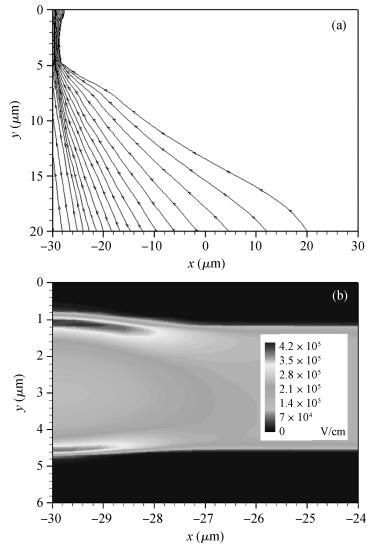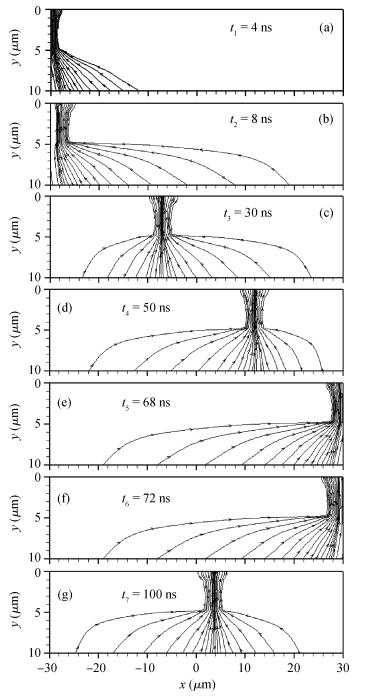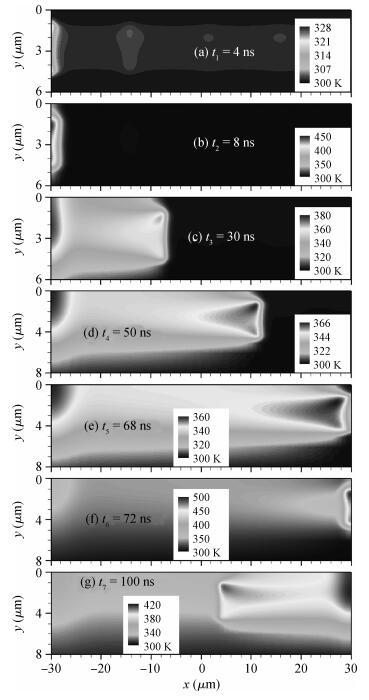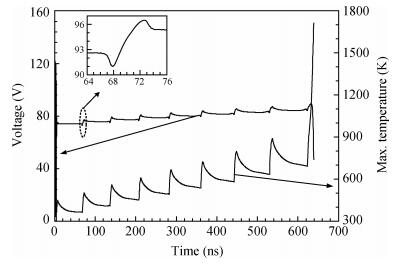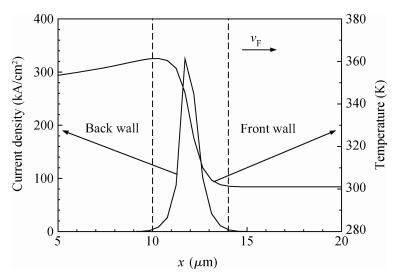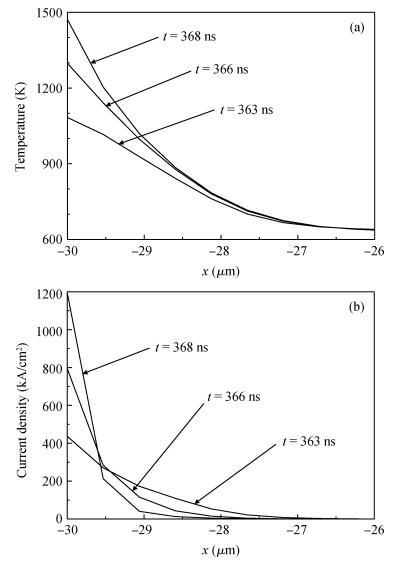| Citation: |
Xingrong Ren, Changchun Chai, Zhenyang Ma, Yintang Yang, Liping Qiao, Chunlei Shi, Lihua Ren. Motion of current filaments in avalanching PIN diodes[J]. Journal of Semiconductors, 2013, 34(4): 044004. doi: 10.1088/1674-4926/34/4/044004
****
X R Ren, C C Chai, Z Y Ma, Y T Yang, L P Qiao, C L Shi, L H Ren. Motion of current filaments in avalanching PIN diodes[J]. J. Semicond., 2013, 34(4): 044004. doi: 10.1088/1674-4926/34/4/044004.
|
Motion of current filaments in avalanching PIN diodes
DOI: 10.1088/1674-4926/34/4/044004
More Information
-
Abstract
The motion of current filaments in avalanching PIN diodes has been investigated in this paper by 2D transient numerical simulations. The simulation results show that the filament can move along the length of the PIN diode back and forth when the self-heating effect is considered. The voltage waveform varies periodically due to the motion of the filament. The filament motion is driven by the temperature gradient in the filament due to the negative temperature dependence of the impact ionization rates. Contrary to the traditional understanding that current filamentation is a potential cause of thermal destruction, it is shown in this paper that the thermally-driven motion of current filaments leads to the homogenization of temperature in the diode and is expected to have a positive influence on the failure threshold of the PIN diode. -
References
[1] Sze S M. Physics of semiconductor devices. New York:Wiley, 1981[2] Cory R. PIN-limiter diodes effectively protect receivers. EDN, 2004, 49(26):59[3] Muller M W, Guckel H. Negative resistance and filamentary currents in avalanching silicon p+-i-n+ junctions. IEEE Trans Electron Devices, 1968, 15(8):560 doi: 10.1109/T-ED.1968.16403[4] Symanczyk R, Gaelings S, Jäger D. Observation of spatio-temporal structures due to current filaments in Si pin diodes. Phys Lett A, 1991, 160(4):397 doi: 10.1016/0375-9601(91)90672-U[5] Rodin P. Theory of traveling filaments in bistable semiconductor structures. Phys Rev B, 2004, 69(4):045301 doi: 10.1103/PhysRevB.69.045301[6] Oetjen J, Jungblut R, Kuhlmann U, et al. Current filamentation in bipolar power devices during dynamic avalanche breakdown. Solid-State Electron, 2000, 44(1):117 doi: 10.1016/S0038-1101(99)00209-9[7] Niedernostheide F J, Falck E, Schulze H J, et al. Current-density patterns induced by avalanche injection phenomena in high-voltage diodes during turn-off. Ann Phys (Leipzig), 2004, 13(7/8):414[8] Niedernostheide F J, Schulze H J. Studies on dynamic avalanche and current filaments in high-voltage diodes. Phys D:Nonlinear Phenomena, 2004, 199(1/2):129[9] Milady S, Silber D, Niedernostheide F J, et al. Different types of avalanche-induced moving current filaments under the influence of doping inhomogeneities. Microelectron J, 2008, 39(6):857 doi: 10.1016/j.mejo.2007.11.004[10] Lutz J, Baburske R. Dynamic avalanche in bipolar power devices. Microelectron Reliab, 2012, 52(3):475 doi: 10.1016/j.microrel.2011.10.018[11] Pogany D, Bychikhin S, Denison M, et al. Thermally-driven motion of current filaments in ESD protection devices. Solid-State Electron, 2005, 49(3):421 doi: 10.1016/j.sse.2004.11.022[12] Johnsson D, Mamanee W, Bychikhin S, et al. Second breakdown behavior in bipolar ESD protection devices during low current long duration stress and its relation to moving current-tubes. IEEE Int Reliab Phys Symp Phoenix, AZ, United States, 2008:240[13] Mamanee W, Johnsson D, Rodin P, et al. Interaction of traveling current filaments and its relation to a nontrivial thermal breakdown scenario in avalanching bipolar transistor. J Appl Phys, 2009, 105(8):84501 doi: 10.1063/1.3097305[14] Denison M, Blaho M, Rodin P, et al. Moving current filaments in integrated DMOS transistors under short-duration current stress. IEEE Trans Electron Devices, 2004, 51(8):1331 doi: 10.1109/TED.2004.832097[15] DESSIS user's manual Version 10. 0. Integrated Systems Engineering AG, Zurich, Switzerland, 2004[16] Egawa H. Avalanche characteristics and failure mechanism of high voltage diodes. IEEE Trans Electron Devices, 1966, 13(11):754 -
Proportional views





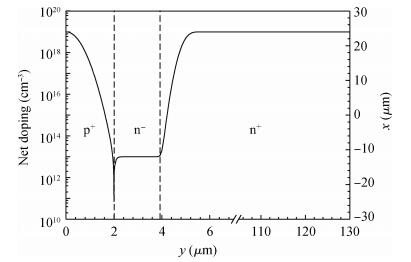
 DownLoad:
DownLoad:
